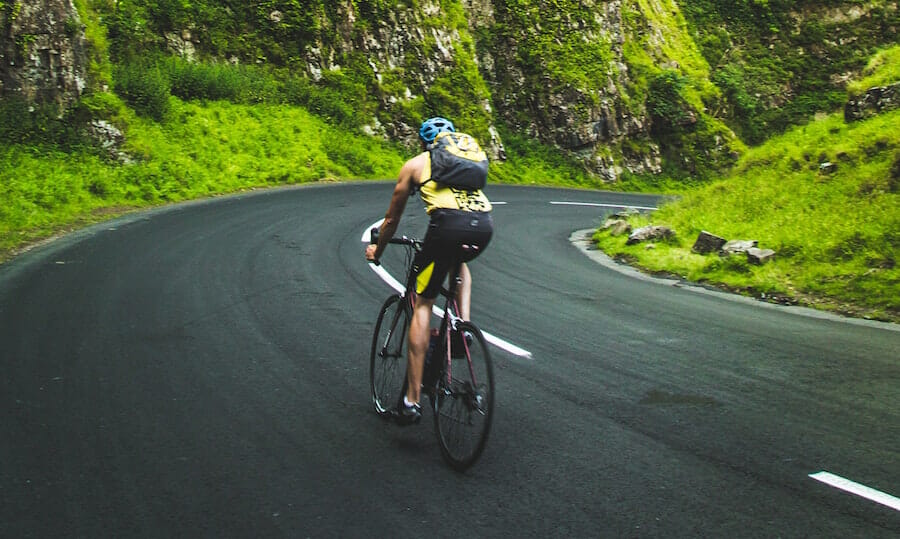
Cycling is a big deal in Greater Vancouver. Our roads, highways, and designated bike paths are lined with recreational and competitive riders alike. Regardless of where you land in or between those categories, you are constantly seeking ways to improve your performance or at the very least stay pain free so that you can continue to do what you love to do. In our never-ending journey to support an active and healthy lifestyle, we’re here with some advice on how physiotherapy can keep you performing at the top of your game on your two-wheels for many years to come.
4 Benefits of Physiotherapy for Cycling Enthusiasts
1. Rehabilitation of Common Cyclist Injuries
Unless you’re sandwiched between a Tour de France-esque group and you collectively take a tumble, bike riding is a relatively low impact activity. It is however, a repetitive one, and therefore poses the ever-present risk of repetitive strain injury. Symptoms of overuse injuries to cyclists typically include the following:
- Knee and leg pain – The knees and legs are the most common sources of pain for cyclists. Pedaling results in constant force exertion through the lower extremities, with chondromalacia patella, patellar, quadriceps tendinitis and patellofemoral pain syndrome becoming unfortunate side effects of overuse.
- Back pain – Lower back pain can follow after having held a flexed position for extended riding periods. However, the are other direct culprits, including improper bike fit (more on this in item#4), poor core strength, and anatomical agents such as leg length discrepancy or misalignment of the spine.
- Achilles pain – The overuse injury caused by inflammation known as achilles tendonitis is marked by pain in the fibrous cord that connects the muscles in the back of the calf to the heel bone.
- Foot pain – Occurs as a result of sustained pressure applied through the front of the foot while pedaling. Pain may be felt in the soft tissues under the forefoot, but may also arise when there is sometimes may involve damage to the nerves which run between the toes.
In addition to the above overuse injuries, there are traumatic ones that bikers may experience, including achilles tears in addition to fractured collarbones and scaphoid fractures (small bone on the thumb side of the wrist) that can result when a cyclist wipes out and lands on either their shoulder or uses an arm/wrist to break the fall.
Whether you’ve sustained a repetitive strain or impact trauma injury, a physiotherapist is the answer for getting back on the road.
2. Prevention of Common Cyclist Injuries
Outside of exercising caution and wearing proper safety equipment when riding, there is little else you can do to prevent injury from falls and other accidents. However, there is a lot you can do to keep those pesky overuse injuries from rearing their head.
By working with a physiotherapist, you will learn how to work your big and small stabilizer muscles alike, the latter of which will go a long way to keeping overuse pain from creeping up. A physiotherapist will also help you develop your core, which will help prevent a wide variety of injuries, especially those pertaining to the lower back. In addition, physio will provide guidance on custom warmups and cool-downs that will include stretches and the use of stability balls, balance trainers, exercise tubes and bands, foam rollers, and even a stationary bike, a regime which you can apply at home before and after your ride.
Think of a physiotherapist are your partner on the asphalt, but without the need for a tandem set up.
3. Custom Orthotics for Riders
Unless you’ve already received corrective instruction (and you stick to it) your feet and legs are misaligned during the act of pedaling. Your foot is typically not in effective contact with the inside of the shoe, and instead pronates to establish contact. Meanwhile, your legs rotate internally with the knees not being centered over the pedals which often results in the aforementioned repetitive strain injury. While bike fit (again, see below) will help, footwear can be just as important.
A physiotherapy clinic that offers custom orthotics will have someone on staff that will examine your foot structure and mechanics and determine how your feet may be contributing to pain you’re experiencing while riding. Beyond a treatment plan, a physiotherapist will either suggest over the counter insoles or custom foot orthotics.
The mistake some cyclists make, is that they assume the same orthotics they use for running can be used for riding. However, there’s a big difference. Given that the primary point of contact is the forefoot, you can expect a much lower profile for the orthotic’s hind foot. Cycling orthotics materials are often lighter light yet stiffer since the foot doesn’t have to go through as great a range of motion. Ultimately, a custom cycling orthotic will realign your foot structure, minimize disagreeable foot motions and relieve pressure.
Keep in mind that custom orthotics can be applied not just to relieve pain and discomfort, but enhance performance through improved pedaling efficiency, giving you a leg (foot?) up over others sharing the path with you.
4. Bike Fitting
Bike fitting is the primary non-injury related reason for an avid cyclist to consult with a physiotherapist. Bike fitting, by definition, is a process which adjusts a given bicycle to fit a rider’s body. The intent is to optimize the experience for safety and comfort, prevent overuse injuries, and to improve biomechanics for maximal efficiency and performance.
Not only will you receive a comprehensive physical assessment, your therapist will inquire about your history of cycling-related injuries, your equipment (bike/s, shoes, etc.), and your overall goals. Learn more about the bike fitting service available at our clinic, complete with rates and information about how it may be covered by your insurance policy.
For all other questions about how we can help you achieve your goals on the road/path while remaining injury free, or to schedule your initial consultation, contact Absolute PhysioCare today.
